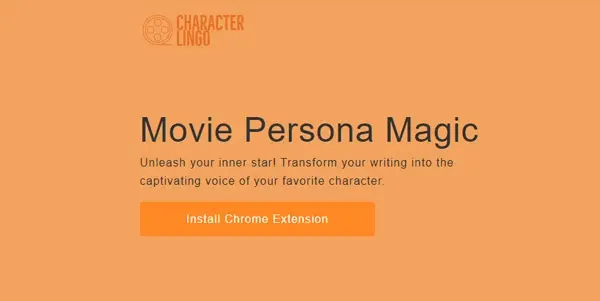Character Lingo AI

An AI that can transform your writing into the style of your favorite movie or book character
Character Lingo AI: Writing with the Voice of Your Favorite Characters
Character Lingo AI is a novel RIP (Rest in Peace, referring to tools no longer available) AI tool that offered a unique approach to creative writing. While no longer functional, examining its capabilities provides valuable insight into the potential of AI-powered writing assistance. This article explores its functionality, features, and potential applications.
What Character Lingo AI Did
Character Lingo AI was an AI designed to transform a user's writing into the stylistic voice of a chosen movie or book character. This meant users could input their text, specify a character (from a presumably pre-defined database), and the AI would rewrite it to mimic that character's speech patterns, vocabulary, sentence structure, and overall tone. This offered a fascinating way to experiment with voice and style, and potentially even to understand the nuances of characterization better.
Main Features and Benefits
While specific details about Character Lingo AI's features are limited due to its discontinuation, we can infer some key benefits based on its description:
- Stylistic Transformation: The primary feature was its ability to alter writing style significantly, replicating the unique voice of a chosen fictional character.
- Creative Exploration: It enabled writers to experiment with different voices and perspectives, potentially sparking new ideas or approaches to their writing.
- Character Understanding: By observing how the AI interpreted and translated text into a specific character's voice, users might gain deeper insights into the complexities of characterization.
- Enhanced Engagement: The novel approach could have increased engagement with writing by adding a playful and experimental element to the creative process.
Use Cases and Applications
Character Lingo AI, had it remained active, could have been used in various scenarios:
- Creative Writing: Authors could have utilized it to quickly generate text in the style of a specific character, allowing for faster prototyping of dialogue or narrative passages.
- Fan Fiction: Writers of fan fiction could have employed the tool to create more authentic and immersive stories, seamlessly integrating established character voices.
- Educational Purposes: The tool could have been used as an educational tool to analyze and understand the linguistic patterns of different characters and authors.
- Content Marketing: While potentially less direct, it might have offered unique ways to generate engaging content, though ethical considerations regarding copyright would be paramount.
Comparison to Similar Tools (Past and Present)
While Character Lingo AI held a unique position, several other AI writing tools offer related functionalities. Many AI writing assistants focus on grammar and style improvements, but few, if any, offered the specific character-based transformation that Character Lingo AI aimed for. Current AI tools focusing on style transfer generally lack the character-specific focus of this defunct tool. A comparison would depend on features offered by other similar tools available at the time of Character Lingo AI's operation, information on which is now limited.
Pricing Information
Character Lingo AI was offered as a free tool. This accessibility contributed to its potential appeal but also likely impacted its scalability and long-term sustainability.
Conclusion
Character Lingo AI represented an innovative, albeit now defunct, concept in AI-powered writing assistance. While its precise capabilities remain partially unknown due to its unavailability, its core functionality—transforming writing into the style of fictional characters—demonstrates the significant potential of AI in creative writing and related fields. The lessons learned from this tool's development and eventual discontinuation likely contributed to advancements in current and future AI writing technologies.